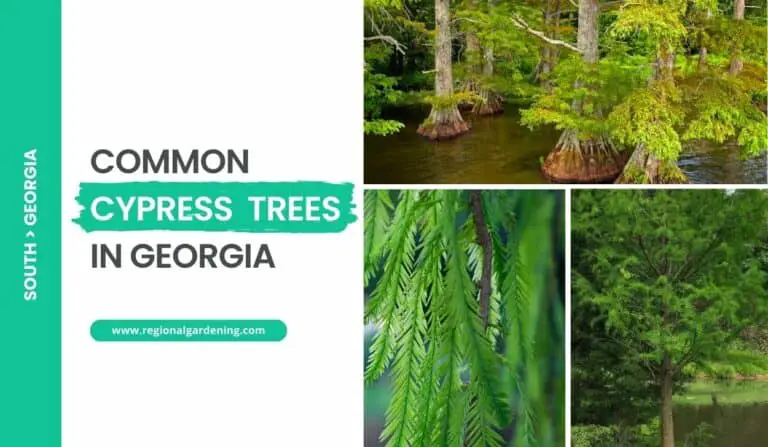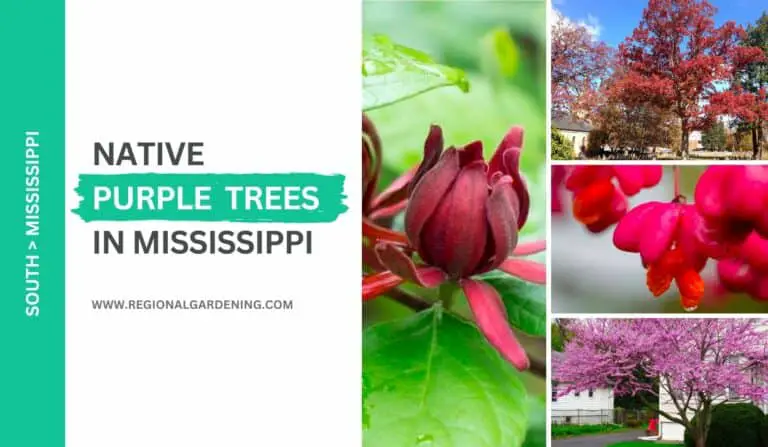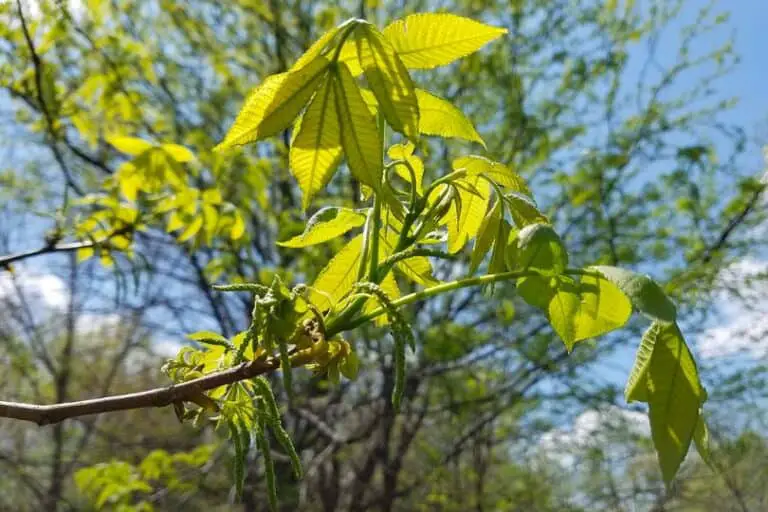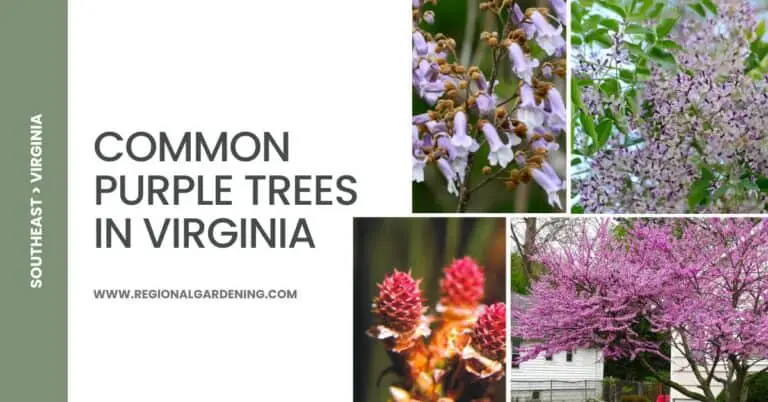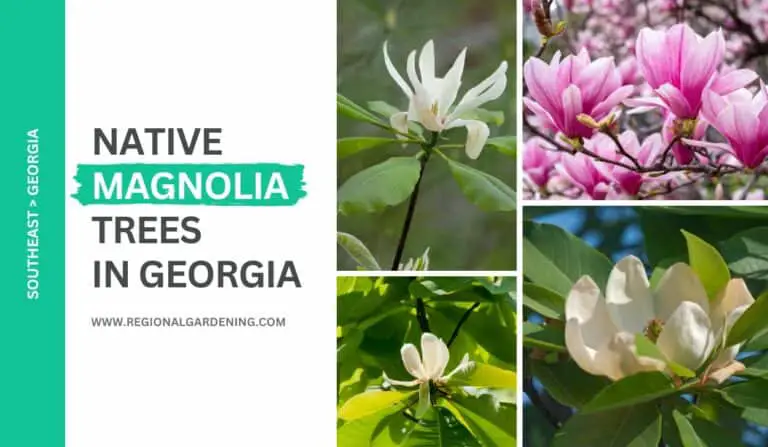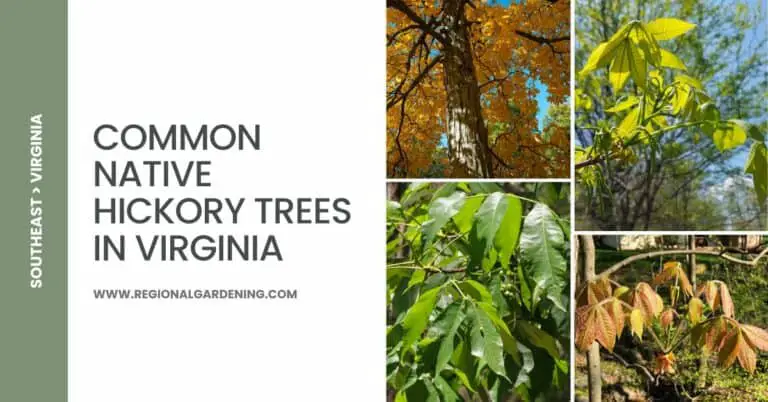2 Native Cedar Trees In Oklahoma (Photos & Identification)
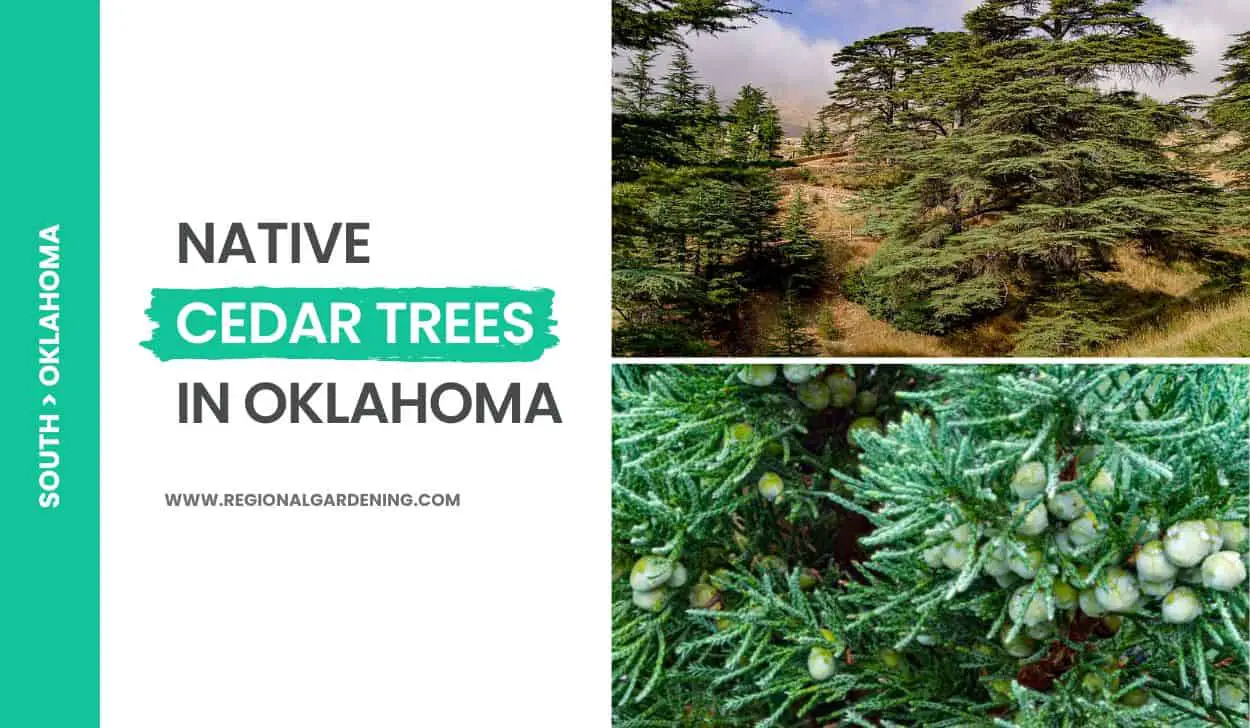
Oklahoma’s diverse landscapes support a diverse range of native flora. Two native cedar trees stand tall and proud among the state’s vibrant and flourishing plant life. Both the Red Cedar and the Rock Cedar are distinct species that grow in different parts of Oklahoma.
These magnificent trees contribute to the local ecosystem in more ways than one. Native cedars in Oklahoma are vital to the state’s ecosystem because of their aromatic wood and their ability to act as windbreaks.
This article will look at the characteristics and significance of these two remarkable cedar trees in Oklahoma.
1. Red Cedar
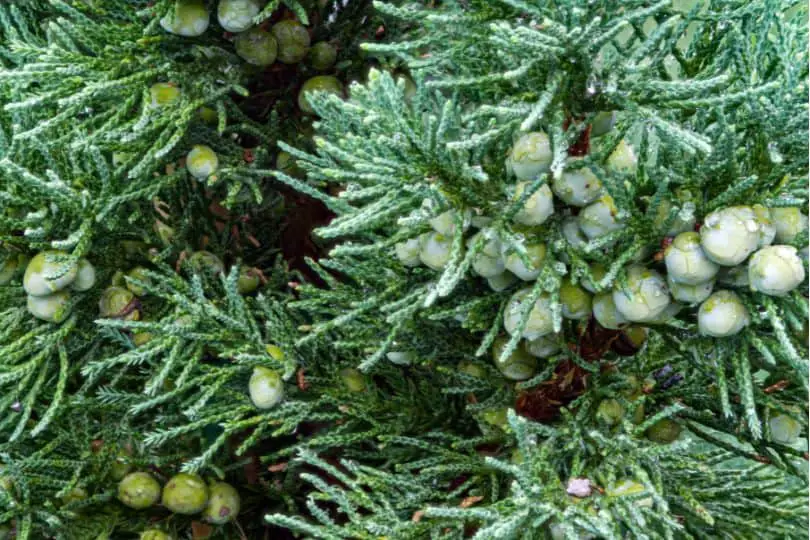
- Scientific Name: Juniperus virginiana L.
- Common Name(s): Red Cedar, Eastern Red Cedar
- Mature Height: 40-50 feet (12-15 meters)
- Native Region: North America
- Flowers: Separate male and female flowers on different trees. Male flowers are small, golden catkins, while female flowers are inconspicuous.
- Cones: Small, pale blueberries with a white bloom, approximately 1/4 inch in diameter, containing one or two seeds.
- Uses: Aromatic and durable wood, which is used for making cedar chests, closets, and interior woodwork. It is also used for making lead pencils. The tree is commonly used for posts, poles, and rustic work due to its durability in contact with the soil.
The red cedar, scientifically known as Juniperus virginiana, is a significant tree that may be found across Oklahoma. It is tolerant of a wide range of soil conditions, surviving even in bare soils where few other trees can grow.
This tree is well-known for its uneven growth and grooved trunk. It normally grows to be 40-50 feet tall and has a characteristic red heartwood and white sapwood.
Red cedar leaves exist in two varieties that grow on the same tree. The most frequent form is dark green, minute, and scale-like, with four ranks that resemble square stems. The other variety is awl-shaped, sharp-pointed, and whitened, and it is frequently observed on new growth shoots.
Separate male and female blooms appear at the ends of minute twigs on various trees in the spring. When the male trees are disturbed, they generate golden catkins that emit clouds of yellow pollen. Female flowers are not seen. During their flowering season in February or March, these blooms are a significant source of nectar for pollinators.
The red cedar’s fruit is a tiny, pale blue berry-like cone about 1/4 inch in diameter. It usually has one or two seeds, but it can sometimes have three or four. The fruit has savory flesh all around it and is a well-liked winter food source for birds.
The wood of the red cedar is highly prized for its properties. When used for cedar chests, closets, and interior woodwork, the heartwood is notably red, while the sapwood is white, creating remarkable visual effects.
The wood is also soft, sturdy, and has a consistent feel. These characteristics make it suitable for the production of lead pencils. Furthermore, the wood is extremely resistant when in contact with dirt, making it popular for posts, poles, and rustic work.
The red cedar is a multipurpose tree in Oklahoma landscapes. Its capacity to grow in a wide range of soil conditions, as well as its durability, makes it excellent for a variety of applications. It can be planted alone or in groups as a windbreak or privacy screen.
It is a fantastic choice for adding visual interest and scent to the environment due to its gorgeous leaf and aromatic wood. For maximum growth, provide well-drained soil and plenty of sunlight when growing red cedars in Oklahoma. Additionally, pruning may be required on a regular basis to preserve the appropriate shape and size.
2. Rock Cedar
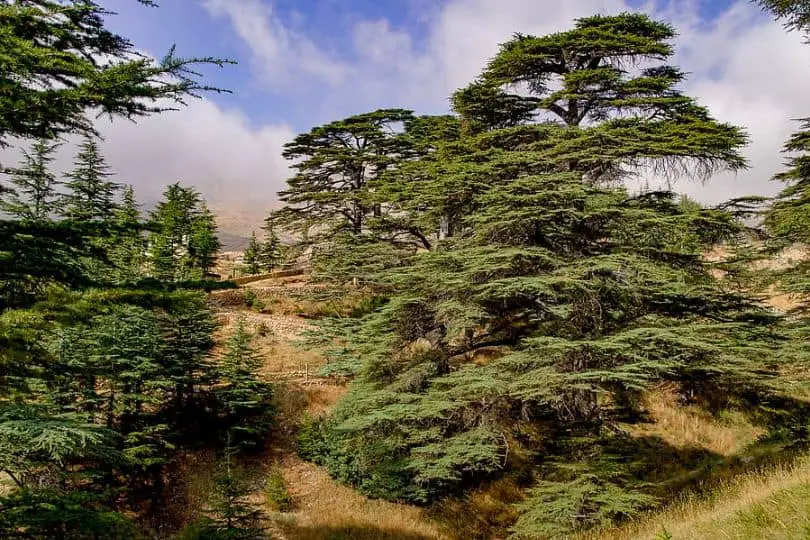
- Scientific Name: Juniperus virginiana
- Common Name(s): Rock Cedar, Eastern Red Cedar
- Mature Height: 30-40 feet (9-12 meters)
- Native Region: North America
- Flowers: No Flowers.
- Cones: Small, berry-like cones that are green when young and turn bluish-purple when mature.
- Uses: Landscaping, windbreaks, erosion control, wildlife habitat, cedar chests, and decorative woodwork.
The Rock Cedar is a North American cedar tree. It is a small to medium-sized evergreen tree that can grow to be 30-40 feet (9-12 meters) tall when mature. This cedar species is widespread in the eastern and central United States, including Oklahoma.
The Rock Cedar has a distinct appearance, with dense, scale-like foliage in dark green. When young, it has a pyramidal shape, but as it grows older, it becomes more irregular and often develops a twisted or gnarled trunk. It has a reddish-brown bark that is slightly fibrous.
While the Rock Cedar does not bloom, it does produce little berry-like cones. When mature, these cones begin green and later turn bluish-purple. Because the cones contain microscopic seeds, they are a valuable food source for wildlife, notably birds.
The Rock Cedar is commonly employed in Oklahoma landscapes due to its hardiness and versatility. It is ideal for windbreaks, erosion management, and the creation of wildlife habitats. Its dense foliage provides good seclusion and can assist in noise reduction in residential areas.
It is critical to pick a well-drained spot with full sunlight when growing a Rock Cedar in Oklahoma. These trees may grow in a variety of soil types, including rocky and sandy soils. Once established, they are drought-tolerant, making them ideal for Oklahoma’s dry climate. Pruning should be kept to a minimum to preserve the tree’s natural shape.
Aside from its utilitarian applications, the Rock Cedar is prized for its aromatic wood, which is resistant to decay. It is often utilized in the construction of cedar chests as well as decorative woodwork. Because the wood has a lovely scent and is known to resist insects, it is an excellent choice for lining closets and drawers.
Native Cedar Trees In Oklahoma – FAQs
Let’s go through some of the most frequently asked questions on the internet about native cedar trees in Oklahoma.
Are there any cedar trees in Oklahoma?
Yes, there are cedar trees in Oklahoma. Red cedar and rock cedar are the most common cedar trees in the state. These trees are adaptable to a wide range of soil types and can be found in a variety of habitats throughout Oklahoma, including prairies, woodlands, and roadside ditches. They are well-known for their drought tolerance and are frequently used in landscaping due to their hardiness.
How to care for cedar trees in Oklahoma?
There are a few key steps to caring for cedar trees in Oklahoma. To begin, make sure they are planted in well-draining soil to avoid waterlogging. Watering is necessary on a regular basis, especially during the establishment phase, but once mature, cedar trees can withstand drought conditions. Mulching around the base helps to keep moisture in the soil and regulates soil temperature.
Pruning dead or diseased branches helps to keep a tree’s health and shape. Maintain good air circulation and avoid overcrowding to keep pests and diseases at bay. Consider periodic fertilization, but do not go overboard. Keep an eye out for cedar-apple rust, a common disease, and treat as needed. Overall, native cedar trees are well-adapted to Oklahoma conditions and require little maintenance.
What are the uses of cedar trees in Oklahoma?
Cedar trees in Oklahoma serve several valuable purposes. Because of its durability and natural resistance to decay, their aromatic wood is used in a variety of industries, including woodworking and furniture-making. Native Americans and early settlers used cedar to make tools, shelters, and even canoes.
Additionally, cedar trees are used in landscaping for their hardiness and aesthetic appeal. In traditional medicine, cedar oil is extracted for its potential therapeutic properties. Overall, cedar trees play significant ecological, cultural, and economic roles in Oklahoma.
Similar Articles
- Native Pine Trees In Oklahoma
- Native Maple Trees In Oklahoma
- Native Elm Trees In Oklahoma
- Common Palm Trees In Oklahoma
- Native Hickory Trees In Oklahoma
- Native Oak Trees In Oklahoma
- Common Cherry Trees In Oklahoma
- Native Ash Trees In Oklahoma
- Common Birch Trees In Oklahoma
- Native Cypress Trees In Oklahoma
Sources
The Regional Gardening team makes sure that the information in our articles is accurate by only using sources that are known to be trustworthy. Some of these sources are peer-reviewed journals from government agencies, well-known universities, and scientific research organizations.
- Forest Tree Species, Oklahoma State University Extension
- Oklahoma Trees for Gardening Resource, Oklahoma State University Extension
- Oklahoma Native Trees by County, Oklahoma Forestry Services
- Native Plant Guide, Oklahoma County Conservation District
- Plants, Seeds & Landscapes, Oklahoma Native Plant Society
- Plant Selections for Oklahoma, Oklahoma State University Extension


